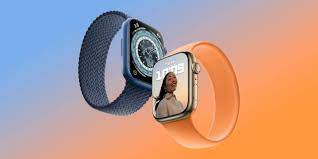The Apple Watch lineup comes in many different options and configurations, including different case materials, colors, sizes, and more. However, one of the most important things to consider is whether you should buy an Apple Watch with cellular connectivity.
Apple Watch with LTE allows you to be on the go without your iPhone while still staying connected. This is a useful feature, but it comes at a price.

Which Apple Watch models offer cellular capabilities?
Apple currently sells the Apple Watch SE, Apple Watch Series 8, and Apple Watch Ultra. The Apple Watch SE starts at $249 with GPS connectivity and $299 with GPS and cellular. Meanwhile, the Apple Watch Series 8 GPS starts at $399, and cellular and GPS start at $499.
One thing to consider, however: the stainless steel Apple Watch Series 8, Apple Watch Series 8 Hermès, and Apple Watch Ultra only offer GPS and cellular connectivity. This means your Apple Watch will have the hardware required for cellular connectivity, but you’ll have to decide whether to pay the monthly fee.
Cell Phone-Associated Expenses
Most plans cost around $10 a month, which is still significantly cheaper than many iPhone plans. If you buy the watch directly from a carrier like Verizon or AT&T, you might get a discount on a cellular plan.
It’s also important to remember that if you buy a standard Apple Watch with GPS, you won’t be able to add a cellular plan later. You must purchase Apple Watch GPS + Cellular to access the plan now or in the future.
No need to carry your iPhone with you
Having a cellular plan makes sense for those who want to get into the habit of moving away from their iPhone for an Apple Watch. Especially for those who run or walk, with the cellular model, you can access calls, text messages, music, and more without having to carry around a bulky iPhone. When paired with AirPods, you can take calls, listen to music, and more even when your iPhone isn’t around.
But if you find yourself always carrying your iPhone with you, cellular may not be worth it for you. When making your decision, consider your current iPhone usage to see if a cellular Apple Watch makes sense.
Emergency SOS on Apple Watch
If you want to make emergency services calls from your Apple Watch and you don’t have a cellular number, you can still do so, but only if you’re connected to a known Wi-Fi network.
This is one of the most important things to consider. If you’re not planning to bring your iPhone, the cellular Apple Watch can give you peace of mind. The Apple Watch offers a range of health features, and cellular is arguably a health feature as well.
Family settings
Family Setup is popular with parents who want to be able to connect with their kids without an iPhone. With this feature, parents can set up cellular Apple Watches for their kids on their personal iPhones. The child can then use their Apple Watch to make calls, text messages, or use any other available feature, all of which require their own phone number and Apple ID. With Family Setup, the parent’s iPhone doesn’t need to be nearby.
Some reasons to choose this option include that it is more cost-effective. Not only is the device less expensive than most iPhones, but it’s also cheaper to add a data plan and Apple Care+ insurance. Also, because Apple Watches are worn on the wrist, they tend to be harder to lose.
Finally, choosing an Apple Watch over an iPhone allows your kids to spend less time behind the screen, a goal of many parents. There are parental controls to make the Apple Watch work for you.
For most people, an Apple Watch with cellular capabilities is probably the right decision. While the associated cost is higher, it unlocks many of the Apple Watch’s best features and helps it become truly independent from your iPhone.
>>>>>>>>>>>>Apple Watch battery









